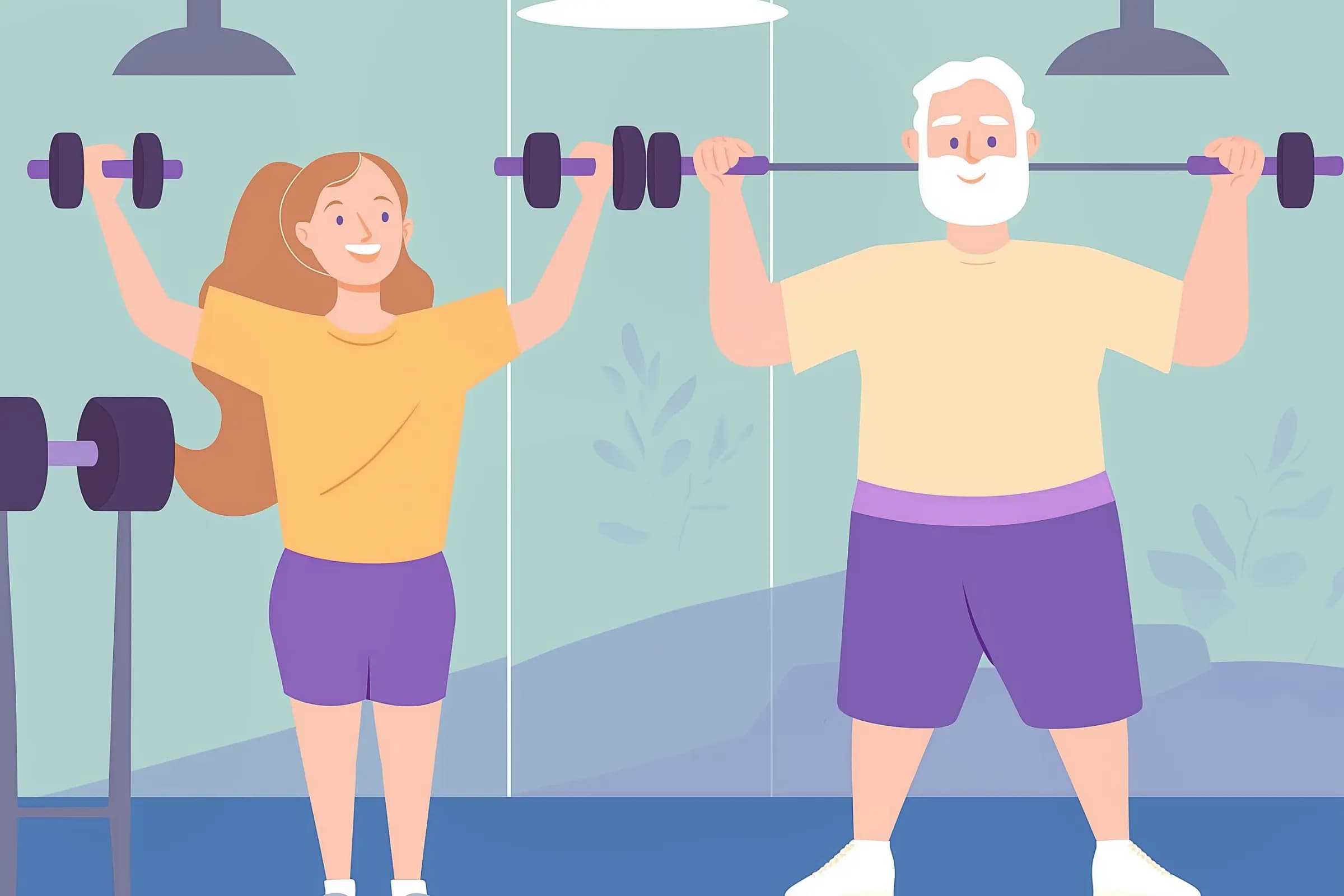Stay Updated
Get the latest insights on creative testing and ad optimization delivered to your inbox.
Get the latest insights on creative testing and ad optimization delivered to your inbox.

Master the art of targeted ad creative with proven strategies for crafting personalized, high-converting ads across different audience segments, funnel stages, and demographics.
With the rapid evolution of digital advertising platforms, the power of creative content has become more critical than ever. As platforms like Meta, Google, and TikTok shift away from manual targeting controls, the concept of "creative as the new targeting" has emerged. This approach emphasizes the importance of creating engaging, relevant ad content that naturally attracts the right audience.
This article explores various types of targeted messaging in ad creatives designed to forge stronger connections with distinct segments of a company's audience. We'll cover funnel-stage targeting, persona-targeted messaging, occasion-targeted messaging, and other meaningful facets of targeted creative strategies.
By intentionally choosing the themes, messages, and visuals in your ads, you effectively "target" the right audience through creative content. For instance, an ad featuring men's rings is likely to be shown to men or those looking to buy gifts for men. By tailoring your creative choices, you ensure your ads reach the right audience and drive meaningful engagement.
Different stages of the marketing funnel require tailored messaging to move potential customers from awareness to conversion. Here's how targeted messaging can be optimized for various funnel stages:

At the top of the funnel, the goal is to attract attention and create interest. Messaging at this stage often introduces the brand or product in a relatable context, aiming to seamlessly infuse itself into the consumer's life or find an anchor point they're already familiar with.
This message connects with consumers by integrating the product into their daily routine, making it relatable and accessible. The aim is to reduce initial unfamiliarity and create an immediate connection with something the audience already knows and values, such as their morning routine. This stage is about establishing a presence and initiating a relationship with potential customers by leveraging familiar and trusted aspects of their lives.
In the middle of the funnel, potential customers are evaluating their options. Messaging here should highlight unique selling points, benefits, and address common concerns to aid the audience in considering your product as a viable choice.
This message emphasizes the health benefits and ethical sourcing, appealing to consumers' desire for quality and sustainability. By providing specific benefits and unique selling points, the ad helps differentiate the product from competitors and moves the audience closer to a decision. This stage is about educating the audience, building trust, and making your product stand out among the options they are considering.
At the bottom of the funnel, the focus is on converting interested leads into customers. This stage benefits from direct, persuasive messaging, including offers, urgency, and clear calls to action.
This call to action leverages a discount to incentivize immediate purchase, appealing to those ready to buy. The message is clear, direct, and focuses on pushing the audience to complete their purchase. This stage is about removing any remaining barriers to purchase and providing a compelling reason to act now.
Show compelling discount or promotion
Highlight limited time or availability
Direct call-to-action for purchase
Address final objections
For audiences familiar with your brand, targeted messages can address specific objections or remind them of their interest. This stage involves more personalized messaging aimed at converting users who have shown intent but haven't completed the purchase.
This message targets users who have added items to their cart but haven't completed the purchase, encouraging them to return and finalize their order. By addressing potential objections like shipping costs or highlighting limited-time offers, the ad nudges the audience toward conversion. Retargeting is a crucial strategy for capturing low-hanging fruit by addressing hesitations and providing the final push needed to complete the transaction.
Creating messages tailored to specific personas can deeply resonate with different segments of your audience. This approach involves understanding the characteristics, preferences, and motivations of various buyer personas. Let's explore some examples of persona types:

These individuals are often organized, goal-oriented, and efficient. Messaging that appeals to their need for productivity and structure can be highly effective. Let's pick an example product that someone with a Type A personality might be interested in:
Example: "Engineered for efficiency. Our premium leatherbound planners help Type A personalities stay on top of their game."
This ad speaks directly to the traits of a Type A individual, highlighting how the product complements their lifestyle by enhancing productivity and organization. This approach makes the product feel like a natural fit for their structured and goal-driven nature.
This persona loves excitement, travel, and new experiences. Messaging should focus on how the product enhances their adventurous lifestyle.

This message appeals to the adventurous spirit, emphasizing durability and suitability for outdoor activities, making the product a natural fit for their lifestyle. It highlights how the product can keep up with their active and exploratory nature.
Astrology has seen a resurgence in popularity, especially among younger demographics. Tailoring messages to astrological signs can create a more personal connection.

This message leverages the characteristics associated with the Aries sign, making the product feel personalized and relevant to those who identify with or are interested in astrology. This approach can create a strong emotional connection by aligning the product with the consumer's identity and interests.
Occasion-targeted messaging anchors the product to specific events or activities, making it easier for consumers to envision how it fits into their lives.
Products like portable speakers or disposable cutlery sets can find common ground with specific individuals and their interests by, for example, being marketed as essential for outdoor gatherings.

Example: "The perfect companion for your next picnic. Enjoy high-quality sound wherever you go."
This message situates the product within the context of a familiar and enjoyable activity, making it more appealing by highlighting its utility in enhancing the experience. This approach helps consumers see the product as an integral part of their outdoor fun.
For products like candles or wine, targeting date nights can create an emotional appeal.

Example: "Set the mood for a perfect date night with our aromatic candles. Romance starts here."
This message taps into the emotional aspect of creating a special evening, making the product feel essential for the occasion and enhancing its desirability. It helps consumers envision how the product can elevate their romantic experiences.
Products that aid concentration and comfort, like ergonomic chairs or desk organizers, can be marketed to students and professionals.

This message appeals to the practical needs of students and professionals, emphasizing how the product supports their productivity and comfort during long study or work sessions. It highlights the product's role in making their work or study environment more effective and comfortable.
Different appeals can be used with the same product to connect with different segments of the market. For example, a portable speaker can be marketed for various occasions:
By tailoring the message to different contexts, you can broaden the product's appeal and connect with diverse consumer needs and lifestyles.
While demographic targeting can overlap with persona targeting, it often focuses more broadly on characteristics like age, gender, and life stage. Diversifying creative to appeal to different demographics can significantly enhance reach and conversion efficiency. A study by Meta found that diversifying creative can generate 9% incremental reach and a 32% increase in conversion efficiency. This highlights the importance of appealing to a wide range of demographics to maximize your ad's impact.
Tailoring messages to different age groups can address their unique needs and preferences, ensuring that the product resonates with each demographic.

This message focuses on the high-energy, active lifestyle typical of younger adults, highlighting how the product can enhance their fitness routines.
This message addresses the health and wellness concerns that are more prevalent among older adults, emphasizing the product's benefits in maintaining vitality and supporting overall health.
By tailoring messages to age-specific concerns and interests, you can make your product more relevant and appealing to different age groups.
Targeting messages based on gender can also be effective, especially when highlighting benefits that resonate more with men or women.

This message speaks to women's specific skincare concerns, emphasizing the product's suitability for their unique needs and how it can help them achieve their best skin.
This message highlights the grooming kit's benefits tailored to men, appealing to their desire to look sharp and well-groomed.
Gender-specific messaging can enhance the relevance of your product by addressing the unique preferences and needs of different genders, thereby increasing its appeal.
Addressing the needs of different life stages, such as new parents, retirees, or college students, can make your product feel more relevant and essential.

This message focuses on the concerns of new parents, emphasizing the comfort and safety of their baby, making the product a must-have for their new life stage.
This message targets college students, highlighting the planner's benefits in helping them stay organized and succeed academically, making it an essential tool for their studies.
By crafting messages that speak to the specific challenges and goals of different life stages, you can make your product feel indispensable to a wide range of consumers.
Diversifying your creative content is crucial for reaching a broader audience and enhancing conversion efficiency. According to a study by Meta, diversifying creative can generate 9% incremental reach and a 32% increase in conversion efficiency. This means that by creating varied ad content tailored to different demographics, personas, and occasions, you can significantly expand your audience and improve the effectiveness of your campaigns.
Creative diversification involves developing a range of messages that appeal to various segments of your audience. For example, an ad campaign for a fitness product could include:
By diversifying your creative approach, you can ensure that your ads resonate with a wider audience, increasing the likelihood of engagement and conversion.
Targeted creative messaging is an essential strategy for forging deeper connections with your audience. By tailoring your messages to specific funnel stages, personas, occasions, demographics, and life stages, you can create more relevant and engaging ads. This approach not only enhances the effectiveness of your campaigns but also helps you build stronger, more personal relationships with your customers.
As platforms continue to evolve and the notion of "creative as the new targeting" gains traction, leveraging these targeted messaging strategies will become increasingly important. By being intentional with your creative choices, you can ensure your ads reach the right audience and drive meaningful engagement and conversions.
Combining different targeted messages within the same creative can also broaden its appeal. For example, a holiday campaign could feature a split-screen ad showing "For the adventurers..." and "...and the homebodies" sides of the same product, appealing to different aspects of the user's personality or needs. This strategy allows you to communicate multiple appeals and connect with a wider audience, maximizing the impact of your ad campaigns.
In conclusion, embracing creative diversification and targeted messaging will not only align your ad content with the evolving landscape of digital advertising but also enhance your ability to connect with diverse consumer segments effectively. By continuously testing and refining your approach, you can discover the optimal combination of appeals that drive the best results for your brand, ensuring your advertising efforts are both comprehensive and adaptable.
Continue reading about this topic with these recommended articles.

Master the art of identifying and managing creative fatigue in Meta advertising campaigns. Learn data-driven techniques, advanced analytics approaches, and proven strategies to maintain peak ad performance.
AI-powered marketing tools

We built these tools for ourselves because we were tired of firing up Figma for every simple mockup. Figured other marketers might find them useful too.
AI-powered marketing tools

Discover how to separate meaningful marketing insights from statistical noise with data science techniques. Learn proven methodologies to identify genuine patterns, avoid costly misinterpretations, and make truly data-driven marketing decisions that impact your bottom line.
AI-powered marketing tools